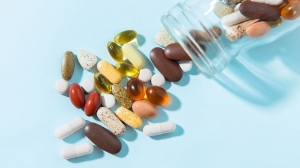Testosterone Replacement Therapy (TRT) is a medical treatment aimed at restoring testosterone levels in men experiencing testosterone deficiency. This guide provides a clear and straightforward look into TRT, how it works, who it can help, and what to expect from the treatment. Understanding the options available is crucial for making informed decisions about your health. Whether you're curious about symptoms of low testosterone or looking for treatment options across Canada, this guide will offer practical insights.
What is Testosterone Replacement Therapy (TRT)?
Testosterone Replacement Therapy is used to treat men with low testosterone levels, a condition known as hypogonadism. TRT involves administering testosterone through injections, patches, or topical applications. The goal is to restore normal testosterone levels in men who may be experiencing fatigue, decreased libido, loss of muscle mass, or other symptoms associated with low testosterone.
TRT has gained popularity in recent years as more men recognize the impact of testosterone deficiency on their overall health, including sexual health and energy levels. But TRT is not a one-size-fits-all solution. Different men may require different treatment approaches, making it essential to understand how TRT works and what it entails.
What Are the Symptoms of Low Testosterone?
Low testosterone levels can manifest in a variety of symptoms, often affecting both physical and emotional well-being. Some common symptoms include:
- Decreased libido
- Erectile dysfunction
- Loss of muscle mass
- Fatigue
- Depression
- Difficulty concentrating
- Hair loss
Low testosterone can reduce your ability to maintain muscle mass, affect your energy levels, and impact your sex drive. If you're experiencing any of these symptoms, a blood test can determine whether TRT may be a suitable option.
Who Needs Testosterone Replacement Therapy?
Men with hypogonadism or those who experience a decrease in testosterone levels due to aging may be candidates for testosterone replacement therapy. Hypogonadism occurs when the body doesn't produce enough testosterone due to problems in the testes, pituitary, or hypothalamus.
TRT is not typically recommended for men with normal testosterone levels or those who want to enhance athletic performance, as it can lead to negative side effects, including infertility, cardiovascular problems, and an increased risk of prostate cancer.
How Does Testosterone Replacement Therapy Work?
TRT works by supplementing the body's natural testosterone production. There are several methods for administering testosterone, each with its advantages and disadvantages:
- Injection: Testosterone cypionate is one of the most commonly prescribed forms of testosterone injection. Injections are administered into the muscle and typically done once every 1-2 weeks.
- Topical: Topical gels or patches can be applied daily to maintain steady testosterone levels.
- Pellets: Implanted under the skin, these pellets release testosterone slowly over several months.
The method of administration is often chosen based on personal preference, medical history, and the dosage required to achieve optimal testosterone levels.
What Are the Risks and Side Effects of TRT?
While TRT can offer significant benefits for men with low testosterone, it is not without risks. Side effects of testosterone therapy may include:
- Hair loss
- Acne
- Increase in red blood cells, which can lead to cardiovascular issues
- Infertility
- Risk of prostate cancer
It's essential to have regular bloodwork to monitor testosterone levels, prostate health, and red blood cell counts during TRT. Properly managing the dosage and method of administration can help mitigate some of these risks.
How is Testosterone Replacement Therapy Regulated in Canada?
In Canada, TRT is regulated by Health Canada, which ensures that all testosterone products meet strict safety and efficacy standards. To begin TRT, a doctor will typically require blood tests to confirm low testosterone levels. A comprehensive evaluation of your medical history and overall health will determine whether TRT is right for you.
It's important to consult with a healthcare provider who is knowledgeable about TRT and its long-term effects. Canadian men's access to TRT has improved with online testosterone clinics, allowing for consultations and treatment prescriptions through digital platforms, but these should be approached cautiously.
What Is the Cost of Testosterone Replacement Therapy in Canada?
The cost of testosterone replacement therapy can vary depending on the type of treatment, dosage, and clinic. Injection-based treatments are often more affordable, while topical treatments may have higher ongoing costs.
Many clinics offer medically supervised TRT, but insurance coverage may vary. It's a good idea to discuss the financial aspects of TRT during your consultation to understand what is included and what additional expenses may arise.
How Does TRT Affect Libido and Sexual Health?
One of the main reasons men seek TRT is to address problems with libido and sexual health. Low testosterone can lead to decreased libido, erectile dysfunction, and reduced sex drive. TRT can help restore sexual function and improve overall satisfaction.
However, it's important to note that TRT is not a cure-all for sexual health issues. Other factors, such as stress, psychological well-being, and underlying health conditions, may also play a role in sexual dysfunction. A thorough assessment from your healthcare provider is necessary to determine the root cause.
Can TRT Help with Muscle Mass and Physical Strength?
Testosterone plays a critical role in muscle mass and strength. Men with low testosterone often find it difficult to maintain or build muscle. TRT can help increase muscle mass and improve physical performance, particularly when combined with regular exercise and strength training.
It's worth noting, however, that TRT should not be confused with anabolic steroid use. TRT aims to restore normal testosterone levels in men with deficiency, while steroid use typically involves doses far beyond the therapeutic range and can lead to significant health risks.
What Are the Alternatives to TRT?
Not all men with low testosterone levels need TRT. Some alternatives include lifestyle changes, such as increasing physical activity, improving diet, and reducing stress. In some cases, human chorionic gonadotropin (hCG) or gonadotropin-releasing hormone (GnRH) therapies may be considered to stimulate natural testosterone production.
It's important to explore all options with a healthcare provider to determine the best course of action. TRT may not be suitable for everyone.






